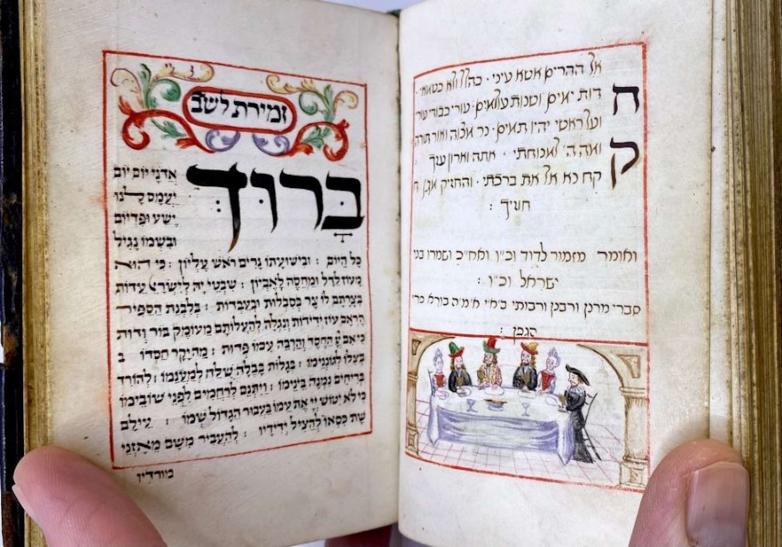18th Century Hebrew Prayer Book Found in Home Stuns at Auction

The prayer book
The manuscript of Tikune Shabat (prayers and devotions for the Sabbath) sold for a hammer price of £57,000 at Hansons Auctioneers (Sept 5) after an intense international bidding battle. It had been guided at £5,000-£10,000.
The sellers, retired teachers Martin Wilson and his wife Susan from Grange-over-Sands, Cumbria, England, knew it was of some historical significance, but had no idea it would spark such strong demand.
“The prayer book was discovered by my wife’s uncle," said Martin, "who lived in central Amsterdam most of his life. When he passed away a number of years ago, his wife looked after the book until she passed away last summer and the book passed to my wife. We think it’s been in the family for around 50 years."
Jim Spencer, head of Hansons’ Library Auction, asked Ilana Tahan, lead curator of Hebrew and Christian Orient Collections at the British Library to assess the decorated manuscript. A possible connection to prominent German rabbi Jacob Emden (1697-1776), who championed Orthodox Judaism, was uncovered.
“Our research helped us grasp how important this manuscript was," he said. "Similar examples exist in museums and bidders were not slow to understand its value. And yet it was shown to me as something of an afterthought. The vendor visited me to consign a Harry Potter book. However, before we shook hands to leave, he pulled this little leather case out of his bag and asked me if it was anything worth looking at. I was completely bowled over by it. It’s beautiful."
The book states it belonged to Abraham ben [son of] Meir Emden, and the date given is Thursday, 13 of the Hebrew month of Shevat, 517 [i.e. 5517], which corresponds to February 3, 1757. Though hard to prove, it is possible Abraham was the son of Meir Emden whose father was the prominent German rabbi and Talmudist Jacob Emden (1697-1776). Meir Emden (1717-1795) had been a rabbi and Av Bet-Din (senior jurist) at Constantine in the Ukraine.
The manuscript contains Sabbath hymns, the prayer for the New Moon, and Perek Shirah, an ancient hymn of praise in which every created thing – from the animate to the celestial – thanks God for its existence.
Featured on the decorated title page are Moses holding the Tablets of the Law, and Aaron, his brother, dressed in high priest vestments. This is a frequent motif in 18th century Hebrew manuscripts and has its roots in the ornamented pages of earlier imprints from Amsterdam and other European printing centres. The animal, celestial and vegetal illustrations enclosed within mauve and blue ink medallions are part of the Perek Shirah hymn. Several illustrations show families around a table celebrating the Sabbath.
A particularly interesting illustration is placed at the beginning of the prayer for the new moon [Birkat ha-levanah] and shows a group of men dressed in black garments gazing upwards at a crescent moon. Part of the text is written in Rashi unvocalised script, a semi-cursive script based on a 15th century Sephardic (originating in the Iberian peninsula) handwriting.















